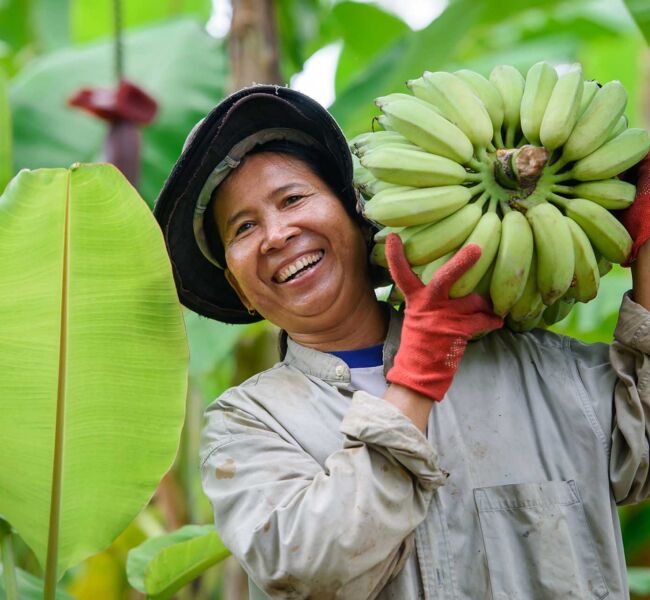Imagine being restricted to a serving of small fries at your favourite fast food joint or being told that your favourite hot chips will be replaced with a waffle hash.
For a world that is in love with potatoes, a global potato shortage spells trouble. This situation is not set on a hypothetical premise but has actually already happened.
The humble spud is the latest victim on an ever-expanding list of food products affected by the pandemic.
Other food items that recently faced increased scarcity include corn and soybeans – key ingredients used in animal feed. This subsequently resulted in price spikes across both pork and poultry products.
Food (In)security
While the growth of Asia’s livestock markets could be contributing to raised commodity prices, studies have pointed towards the effects of climate change as a driving factor negatively impacting crop yield.
Climate change has hit food production fast and hard and has already been responsible for a 1% reduction in the top 10 global crops each year. This may seem like a small figure, but it is actually enough to provide over 50 million people with a diet that the FAO believes is essential to stave off chronic undernutrition.
Extreme weather globally has reduced crop harvests by up to 50% in recent years. By 2050, nearly 40% of the global cropland area could be exposed to severe drought – a major cause of crop failure – for three or more months each year.
Could the problem be the answer?
The agriculture and livestock industries have long borne a bad reputation for being a major contributor to potent earth-warming greenhouse gas emissions. Estimates suggest that the sector is responsible for between 19 – 29% of global greenhouse gas emissions.
Enter regenerative agriculture – a farming approach that prioritises soil health, local biodiversity, and the philosophy of being good stewards of the environment. While not an entirely new phenomenon, regenerative agriculture has been gaining significant traction in recent years as a more sustainable and responsible approach towards food production.
It is little wonder that one of the major tenets of regenerative agriculture is its claim to capture carbon and put it back into the earth, i.e. soil. In practice, this involves abstaining from tilling, and actively composting food waste.
For all its benefits to the climate and crops, why is regenerative agriculture not the norm then? Here, we tackle some myths and misconceptions to shed some clarity on what this means for consumers today.
We can get any food we want, at any time of the year
Crop science technology has helped farmers reap bountiful harvests in less-than-ideal growing conditions. Industrial monocropping has – generally – helped farmers improve profits, crop yields and farming efficiency – all these while making food more affordable and accessible to communities globally.
The result: we get access to our favourite fruit and vegetables at any time of the year at relatively similar prices even when they are traditionally not in season.
Yet, there is growing and robust evidence that industrial monocropping is not only taking its toll on the environment but on farm productivity and expenses. Raising a single crop on a large scale increases the risk of pest outbreaks and plant disease. This breeds a reliance on excessive and liberal use of industrial chemicals which may result in damages to local biodiversity.
Feeding a growing world should also imply that we will be able to continue feeding it for the long-term. Arguments that regenerative agriculture results in reduced yields are already a hotly debated topic and in some cases been proven as not necessarily true.
Consumers and producers alike will need to re-examine if we are really lacking food or lacking prudence in our consumption patterns.
Regenerative farming is less efficient than ‘modern’ agriculture methods
Although it may seem that all the practices which regenerative agriculture embraces run contrary to modern, industrial farming, this is actually not the case. Practices common to regenerative farming can be effectively integrated to farms that are large-scale and highly mechanised.
In a farm in the Netherlands – aptly named the Farm of the Future – farmers and researchers are working together to integrate technological solutions with nature positive regenerative agrarian practices. Different types of crops were cultivated at the same time, increasing crop diversity thereby improving soil health. Sensors, drones, and on-ground robotics track and collate crop growth while delivering precise interventions to diseased crops. Data collated from these machineries then empower farmers to more informed farming decisions.
The Farm of the Future provides a glimpse of how advanced technologies can work hand-in-glove with regenerative agriculture – increasing efficiencies in farming while concurrently working together with the environment.
What does regenerative agriculture have to do with my supermarket shopping list?
Businesses compete to best meet the demands of consumers – be it affordability, variety, or quality. Yet, to drive this demand, consumers need to be in-the-know.
While consumer awareness around sustainability has been growing, regenerative agriculture remains a relatively unknown practice outside of the agriculture industry. Yet, time and again we have seen how consumer demands have shaped the production practices of entire industries.
As we live with the existential threat of climate change, there is no better time for agriculture and sustainability to work together. And this should be underpinned by communications that connects the industry and consumers alike to inform, educate and subsequently create change in behaviours.
Being restricted to a small packet of hot chips is already incredibly depressing but if we don’t act fast, we can expect this to be the new and more costly norm for all.
###
Samuel is a Senior Account Executive at Spurwing Communications. He is passionate about sustainability and has provided strategic communications counsel to some of the biggest brands in agriculture, food and nutrition across both the private and non-profit sphere.





